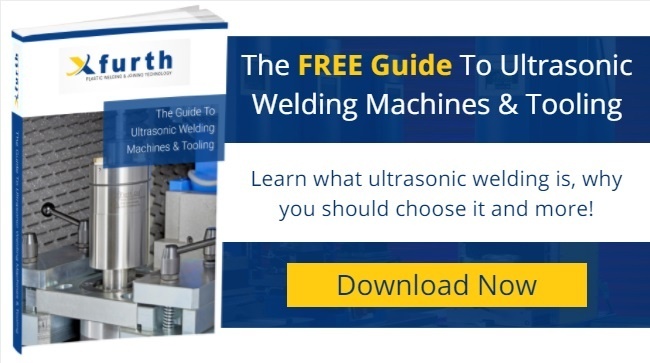
Vibration welding is a cost-effective thermoplastic welding process that works well in a variety of circumstances. A vibration welding machine horizontally vibrates the faces of two components together under a constant pressure to produce friction and thus heat. It is this heat that creates the weld that joins the two parts together. Vibration welding allows for precise control over the amount of frictional movement produced (amplitude), giving accurate and repeatable results. It is therefore the preferred welding method for many components, from small or curved through to large automotive components of a complex geometry.
However, one of the main downsides of vibration welding is the bi-product of dust produced by the process. Below we describe two ways of reducing the amount of dust produced by the vibration welding process.
Vacuum And Extraction Engines
These can be fitted to existing machines or new welders and are a good way of ensuring an internally cleaner product at low cost. Extraction outlets can be fitted to the tooling to help reduce debris build up during the welding process.
Hybrid Vibration Machines With Infrared Preheating
A more sophisticated approach is to aim for a ‘clean’ vibration welded joint by utilising hybrid technology. The idea behind clean vibration welding is to avoid the need for direct contact between the two surfaces until they are in a molten state. It is, after all, the friction generated by contact between solid components that produces all the problematic dust particles.
The solution is to preheat each joint with an infrared welding device before the vibration welding begins. This stage is incorporated into the hybrid vibration welder itself – the energy being transferred through bands of heat emitting metal foil. This treatment heats and plasticises the weld area around the joint, reducing friction and dust emissions. But doesn’t this undermine the whole point of vibration welding, which is the generation of heat through friction?
Surprisingly not, although hybrid technology has turned many assumptions about vibration welding on their head. For instance, using a hybrid machine cuts out solid friction altogether, so you have a consistent material flow with no localised melt zones. In place of this, the two molten edges can be vibrated together at a lower amplitude with less force to gain a strong and more compact weld.
The Benefits Of Hybrid Technology
Using a hybrid machine almost completely eliminates dust while still allowing for fast cycle times and efficient use of energy. There is no need to install extractor fans or vacuum pumps, which means you make better use of your factory space too. With the inclusion of pre-heating surface angles can be increased up to 20˚ allowing for parts with a more complex geometry to be welded with ease. The quality of the weld exceeds that of non-hybrid technology and is similar in quality and neatness to results of laser welding which is substantially more expensive as a joining process.
All You Need To Know About Vibration Welding
To find out more about how to use vibration welding to your best advantage while avoiding some of its common problems, download our Guide to Vibration Welding. This free e-book is available exclusively through our website. Click here to access your copy.





